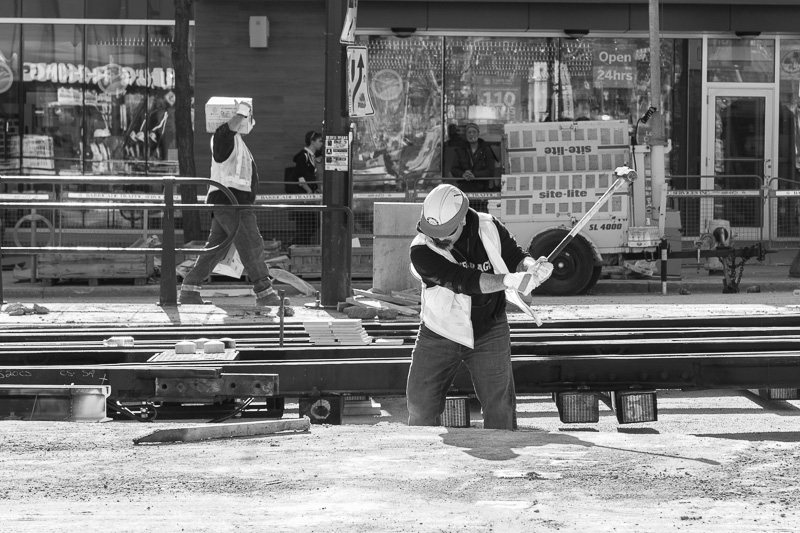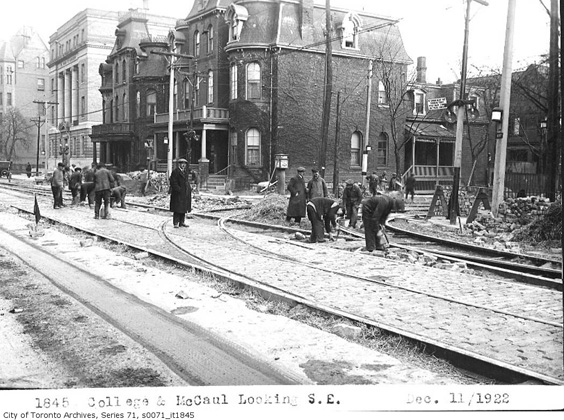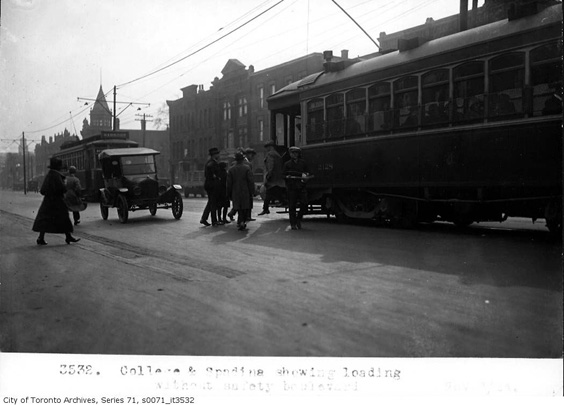The College/Spadina intersection was blocked this month for streetcar track repairs/upgrades so I went over a couple times to catch the mess.

It occurred to me that the city’s online archive might have older photos of the intersection, so I did some digging, and while I couldn’t find anything precisely at the intersection, I did find a photo of the original streetcar line construction work on College Street a little to the east at McCaul.
It was shot on Dec. 11, 1922 so it must have been friggin’ cold for the workers. The photographer was facing southeast. The buildings in the foreground have been replaced by the Health Sciences Building, but the building to the far left is the Stewart Building which still exists.

I found a second image, shot on Nov. 3rd, 1924 after the construction had been completed. It shows passengers waiting to enter the trolley while others exit. As before, the photographer was facing southeast, this time from a position to the west of Spadina. Click on this google maps link to see a contemporary view from that location.

In homage to the earlier photographer, Alfred Pearson, I’ve converted my images to black and white to give them an archival feel. I take it as a given that it’s important for citizens to be able to look back through time at the public spaces they occupy. So how do we go about producing our public memory today? I suspect that in this age of digital photography and non-linear search algorithms, our archival practices have grown haphazard.

In fact, Vint Cerf, a Google executive, has expressed concern that our early digital conversion and production (basically everything digital we’ve created since the invention of computers until today) will be lost to future generations because the software used to read it will vanish thanks to what is becoming the tech industry’s de facto business model: planned obsolescence. So, for example, the images which appear on this site are in jpg format. Who’s to say online delivery of images won’t stop supporting that format? The source files are in RAW format, but not just any RAW format; they’re in Canon’s proprietary RAW format. Who’s to say that Canon will still be in business 50 years from now? Even if it is in business, who’s to say that it will continue to maintain plugins that allow image editing suites to read images in that format?

For digital photographers, it’s not enough to engage in good data storage practices. It is important to remain responsive to technological changes, particularly as they concern changes in archival formats, to ensure that images are readable in the long term. For best practices, see this article from PDN.

Just as the urban landscape changes, so too the digital landscape. Increasingly, that landscape is looking like Snapchat.
